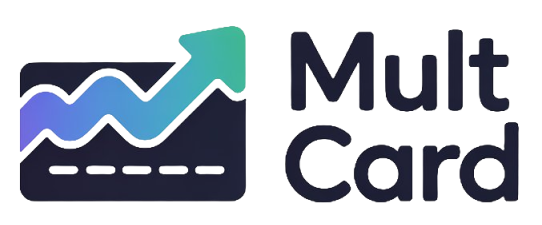Navigating the world of personal finance can sometimes feel complex, but securing a personal loan doesn’t have to be an overwhelming experience. These versatile financial tools can help manage unexpected expenses, consolidate debt, or fund significant life events. Understanding the application process is the first step toward making a confident and informed decision for your financial future.
By breaking down the application into a series of manageable steps, you can approach the process with clarity and purpose. From initial self-assessment to receiving the funds, each phase has its own set of requirements and considerations. This guide will walk you through the journey, providing insights to help you prepare effectively.
Understanding Personal Loans Before You Apply
Before diving into the application itself, it’s crucial to have a solid grasp of what a personal loan is and the terminology associated with it. This foundational knowledge will empower you to compare offers and choose the best option for your circumstances.
What Exactly is a Personal Loan?
A personal loan is a sum of money borrowed from a financial institution, such as a bank, credit union, or online lender, that you repay in fixed monthly installments over a predetermined period. Most personal loans are unsecured, meaning they don’t require you to put up collateral like a car or a house. Lenders approve unsecured loans based on your creditworthiness, which includes factors like your credit score and income.
The interest rate on a personal loan is typically fixed, which means your monthly payment amount will not change throughout the life of the loan. This predictability makes budgeting for repayments much easier compared to variable-rate credit options.
Common Reasons People Seek Personal Loans
The flexibility of a personal loan is one of its most attractive features. The funds can be used for a wide variety of purposes, allowing individuals to address both planned and unplanned financial needs. Some common uses include:
- Debt Consolidation: Combining multiple high-interest debts, like credit card balances, into a single loan with a potentially lower interest rate.
- Home Improvements: Financing renovations, repairs, or upgrades to your property without needing to tap into home equity.
- Major Purchases: Covering the cost of a significant purchase, such as a new appliance, furniture, or even a vehicle.
- Medical Expenses: Paying for medical or dental procedures that are not fully covered by insurance.
- Life Events: Funding special occasions like weddings, moving expenses, or a family vacation.
Key Terms You Should Know
As you research lenders, you’ll encounter some specific financial terms. Understanding them is key to accurately comparing loan offers.
- Annual Percentage Rate (APR): This is the total cost of borrowing money over a year, expressed as a percentage. It includes the interest rate plus any additional fees, like origination fees. APR gives you a more complete picture of the loan’s cost than the interest rate alone.
- Loan Term: This is the length of time you have to repay the loan. Terms commonly range from one to seven years. A shorter term means higher monthly payments but less total interest paid, while a longer term results in lower monthly payments but more total interest paid over time.
- Origination Fee: A one-time fee some lenders charge for processing your loan application. It’s usually deducted from the loan amount before the funds are disbursed to you.
A Step-by-Step Guide to the Personal Loan Application Process
With a better understanding of the fundamentals, you’re ready to explore the application process. Following these steps in order can help streamline your experience and increase your chances of a successful outcome.
Step 1: Assess Your Financial Health
Before you even look at lenders, the first step is to look at your own finances. Lenders will evaluate your financial stability to determine your eligibility and interest rate. Knowing where you stand gives you a significant advantage. Start by checking your credit score, which is a primary indicator of your creditworthiness. Many banks and credit card companies offer free access to your score. A higher score generally leads to better loan offers.
Next, calculate your debt-to-income (DTI) ratio. This is your total monthly debt payments divided by your gross monthly income. Lenders use DTI to gauge your ability to manage new monthly payments. A lower DTI is preferable. Finally, create a budget to determine exactly how much you can comfortably afford to borrow and repay each month without straining your finances.
Step 2: Gather the Necessary Documentation
Being prepared with the right paperwork will make the formal application process much smoother. Lenders need to verify your identity, address, and income. While specific requirements can vary, most will ask for the following:
- Proof of Identity: A government-issued photo ID, such as a driver’s license, state ID card, or passport.
- Proof of Address: Recent utility bills, a lease agreement, or mortgage statements in your name.
- Proof of Income: Recent pay stubs, W-2 forms, tax returns, or bank statements showing regular deposits.
- Employment Information: Your employer’s name, address, and phone number.
Step 3: Research and Compare Lenders
Not all lenders are the same. Take time to research your options, which generally fall into three categories: traditional banks, credit unions, and online lenders. Banks may offer benefits to existing customers, credit unions often have competitive rates for their members, and online lenders are known for fast application and funding processes. Compare APR ranges, available loan amounts, term lengths, and any associated fees. Reading customer reviews can also provide valuable insight into a lender’s service and reliability.
Step 4: Prequalify for Loan Offers
Prequalification is a fantastic way to shop for loans without impacting your credit score. Many lenders offer this option, which involves a soft credit check. You provide some basic financial information, and the lender gives you a preliminary estimate of the loan amount, term, and APR you might qualify for. Prequalifying with several lenders allows you to compare real, personalized offers side-by-side, helping you identify the most favorable terms.
Step 5: Formally Submit Your Application
Once you’ve chosen the best offer, it’s time to submit a formal application. This is where you’ll provide the documentation you gathered earlier. You will fill out a more detailed form, and at this stage, the lender will perform a hard credit inquiry. A hard inquiry can temporarily lower your credit score by a few points, which is why it’s wise to limit formal applications to only the lender you’ve decided to move forward with.
Step 6: Review the Loan Agreement and Accept
If your application is approved, the lender will present you with a final loan agreement. It is absolutely essential to read this document carefully before signing. Verify that the APR, monthly payment, and loan term match the offer you expected. Pay close attention to the fine print, including details about late fees or any prepayment penalties for paying off the loan early. Once you are comfortable with all the terms, you can sign the agreement electronically or in person.
Step 7: Receive Funds and Manage Repayments
After you’ve accepted the loan, the lender will disburse the funds. This is often done via direct deposit into your bank account and can happen as quickly as the same or the next business day, especially with online lenders. Once the money is in your account, your repayment period begins. Setting up automatic payments is a great way to ensure you never miss a due date, which is crucial for maintaining and building a positive credit history.
Tips for a Successful Personal Loan Application
A little extra preparation can go a long way. Consider these tips to improve your application’s strength and secure better terms.
Focus on Your Credit Score
If you’re not in a rush, taking some time to improve your credit score can result in a significantly lower interest rate. You can do this by making all payments on time, paying down credit card balances to lower your credit utilization, and disputing any errors on your credit reports.
Be Realistic About Your Needs
Only borrow what you truly need. A larger loan means a larger monthly payment and more interest paid over time. A clear understanding of your budget and the exact cost of what you’re financing will prevent you from taking on unnecessary debt.
Avoid Multiple Hard Inquiries
While it’s smart to shop around using prequalification, avoid submitting multiple formal applications in a short period. Each hard inquiry can ding your credit score. Stick to the prequalification process to compare offers, and only submit a full application with your chosen lender.
Embarking on the personal loan application process is a significant financial step. By being methodical, prepared, and well-informed, you can navigate each stage with confidence. A thorough approach not only simplifies the journey but also positions you to secure a financial tool that genuinely supports your goals.


